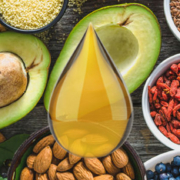Is Beef Tallow Good for You?
Where’s the beef? Evidently, it’s making a comeback in the form of tallow. Beef tallow is processed fat from cows, but in reality it could be made from any type of animal fat. A number of health gurus have touted its benefit for skin care as well as a more natural form of fat for cooking than seed oils. Today we’ll take a look at consuming beef tallow and deal with skin care on Saturday.
There are no more health benefits than there have ever been from using beef tallow to cook. Beef tallow contains high amounts of saturated fat, the worst kind for your heart. That can impart better flavor in whatever is cooked or baked with it, but it’s still a saturated fat. That means it’s ideal for making cholesterol, especially LDL cholesterol in our bodies.
I’ve heard all the arguments about how carbohydrates were the real problem back when they decided to lower the fat intake in dietary guidelines back in the 1970s. That wasn’t true then and it isn’t true now. If we don’t have saturated fat in our diet, and we substitute sugars and other simple carbohydrates, we’ll make our own saturated fat. Why? Because we are animals, and we will make our own fat.
Should you ever use beef tallow for cooking? It’s like any other type of fat—and that includes the seed oils everyone is saying are bad for you. Beef tallow makes a darn good french fry, and nothing works as well as lard (pig fat) in pie crusts, so use it if you want when it will really make a difference. The rest of the time, just focus on the mono- and polyunsaturated fats.
As I’ve said over and over again, it’s not the food that’s bad; it’s the mass quantities we eat. Saturday we’ll look at the pros and cons of smearing tallow on your skin.
What are you prepared to do today?
Dr. Chet
Reference: British Journal of Nutrition (2024), 132, 1039–1050.









